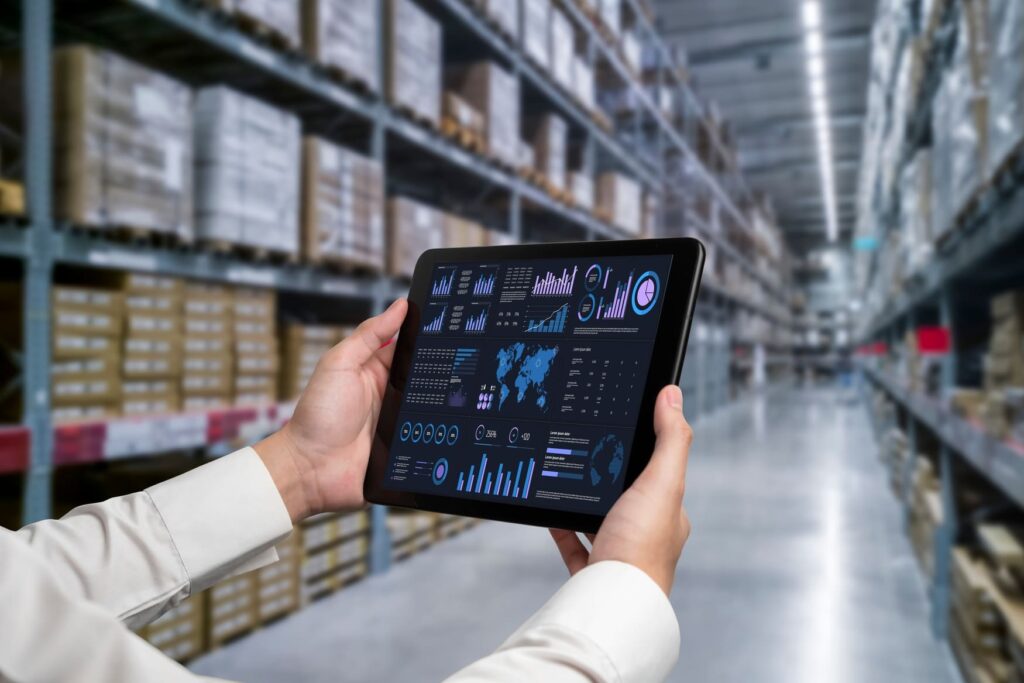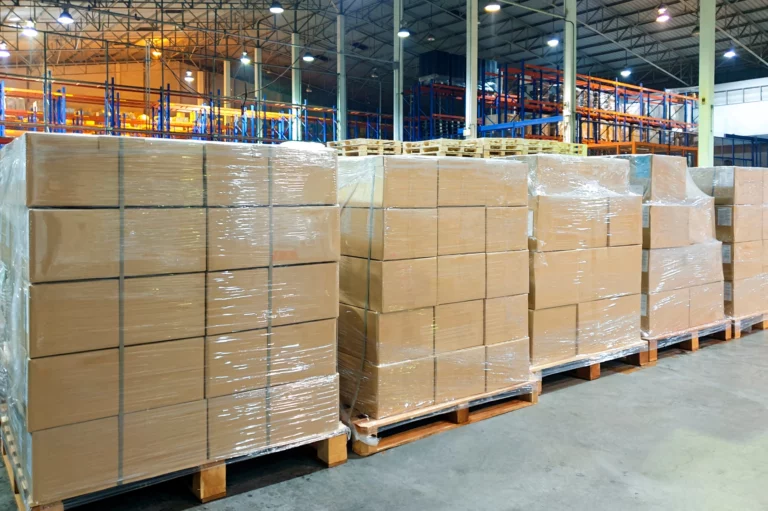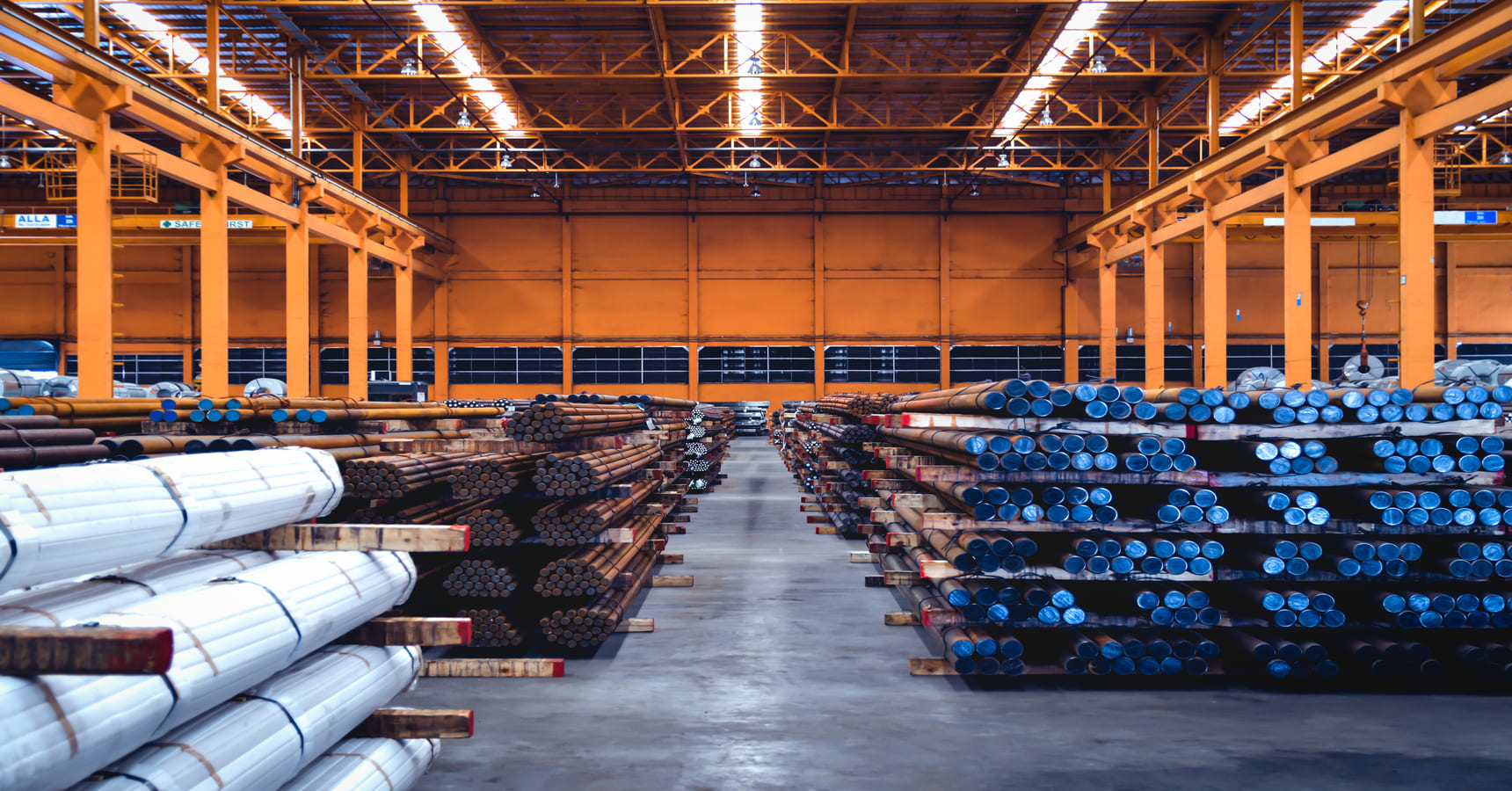The Ultimate Guide to Commercial Warehousing & Storage Solutions for E-commerce

E-commerce is booming, and with it comes an unprecedented need for warehouse space and efficient product distribution. In fact, the U.S. will need an additional 330 million square feet of warehouse space dedicated to online fulfillment by 2025 to keep up with soaring online sales. Globally, e-commerce sales are projected to reach $6.56 trillion by 2025, underscoring how critical effective warehousing has become for businesses. Meeting customer demand for fast, reliable delivery starts with the right warehousing strategy.
Modern commercial warehouses serve as crucial hubs connecting suppliers with customers in the e-commerce supply chain.
This guide covers what commercial warehousing and storage services are, the different warehouse types, key features to look for, and how they give U.S. e-commerce businesses a competitive edge.
What is Commercial Warehousing & Storage?
Commercial warehousing (or commercial storage) refers to large-scale facilities used to hold, manage, and ship products for businesses. These warehouses act as critical nodes in the supply chain, storing goods until they are needed in stores or sent to customers. In the context of e-commerce, a commercial warehouse often doubles as a fulfillment center – receiving shipments of inventory, then picking, packing, and shipping customer orders. Centralizing inventory in a warehouse reduces shipping distances and costs, and makes order processing and packaging much more efficient. In short, commercial warehousing and storage solutions give retailers one location to manage stock and quickly dispatch online orders, improving speed and reliability.
Commercial vs. Industrial Warehousing (What’s the Difference?)
Commercial and industrial warehouses may look similar, but they serve different purposes. Commercial warehouses typically store finished goods for a variety of industries – retail products, consumer goods, food items, medical supplies, and more. They focus on distributing inventory to markets and customers. In contrast, industrial warehouses are usually geared toward manufacturing: they store raw materials, machinery, and parts used in production. In practice, a commercial distribution warehouse might hold both finished products and manufacturing supplies under one roof.
In other words, commercial warehousing is all about getting products out to where they sell, while industrial warehousing supports the production process. Many modern 3PL warehouses actually span both: a single facility might act as a factory storage space and also fulfill retail orders. But if your business sells directly to consumers or retailers (like most e-commerce companies), you’ll mostly use commercial warehouse space for distribution and fulfillment.
Types of Commercial Warehousing and Storage Services
Choosing the right warehouse model depends on your business size, budget, and volume. Here are the main warehousing and storage service options for e-commerce:
- Private Warehouses: Owned or operated by one company, private warehouses offer full operational control but require high investment in facilities, staff, and equipment. While ideal for large retailers or manufacturers like Amazon, they’re often too costly for small to mid-sized e-commerce businesses.
- Public Warehouses: A public warehouse is a third-party facility open to multiple clients, providing storage and handling services on a short-term or flexible basis. Public warehouses are owned and operated by a third party that receives, handles, distributes and stores products for others. They typically charge fees for the space used (e.g. per pallet or per square foot) and transaction fees for each inbound or outbound shipment. Public warehousing is usually pay-as-you-go (often month-to-month), making it a great option for businesses that need overflow storage or seasonal capacity. It allows companies to scale storage up or down without long-term commitment. Many 3PL (third-party logistics) providers offer public warehousing services, essentially renting out portions of their warehouse to different clients and providing basic inventory management.
- Contract Warehouses: Operated by a third party under a long-term agreement, contract warehousing gives one client dedicated space and tailored services, such as packaging, special storage, or returns management. It offers consistent pricing, a close partnership with the provider, and combines the flexibility of outsourcing with the control of having your own warehouse section.
- Distribution Centers and Fulfillment Centers: These terms describe warehouses by their function. A distribution center is a hub that stores products and then redistributes them in bulk to stores or other locations in a supply chain. A fulfillment center, on the other hand, is a warehouse geared toward processing direct-to-consumer orders in real time. In e-commerce, fulfillment centers are crucial: they receive inventory in, then pick, pack, and ship individual orders out. They are high-activity environments focused on rapid turn-around. In fact, a fulfillment center is a warehouse facility that processes and ships customer orders for e-commerce businesses, focusing on high activity and rapid inventory turnover rather than long-term storage. Many third-party logistics companies operate fulfillment centers (sometimes called 3PL fulfillment warehouses) that e-commerce merchants can use, rather than each merchant running their own. The key difference is that warehouses in the traditional sense emphasize storage, while fulfillment centers emphasize continuous movement of goods (from receiving to shipping).
Some hybrid models exist as well. For example, on-demand warehousing platforms let businesses rent warehouse space on a short-term, pay-as-you-go basis. This can be ideal for seasonal spikes or testing new markets. Companies like OLIMP link businesses to thousands of vetted warehouses nationwide, so you can quickly book extra space near your customers when needed.
Key Features and Services of Commercial Warehouses
Not all warehouses are created equal. The best commercial distribution warehouses combine strategic location, smart design, and technology to speed up fulfillment and cut costs. Look for facilities with these features:
1. Strategic Location: Close to highways, ports, rail, or airports for faster, cheaper shipping. Many e-commerce brands use urban “last-mile” distribution centers to offer same-day or next-day delivery.
2. Facility Size & Layout: Tall ceilings for vertical pallet storage, open floor space for easy equipment use, and smart layouts with clear zones for receiving, picking, packing, and shipping.
3. Loading Docks & Equipment: Multiple dock doors, levelers, conveyors, forklifts, and automated movers keep inbound and outbound freight moving quickly.
4. Technology & WMS: A robust Warehouse Management System with real-time inventory tracking, barcode/RFID scanning, and automation. By 2025, over 4 million commercial warehouse robots will help speed up operations.

5. Specialized Storage: Climate-controlled areas for perishables, cold storage for frozen goods, secure zones for high-value items, or heavy-duty racks for machinery.
6. Security & Safety: 24/7 cameras, alarms, secure access, fire suppression, and compliance with safety standards like OSHA or ISO.
7. Value-Added Services: Fulfillment (pick, pack, ship), kitting, labeling, repackaging, and cross-docking to move goods straight from inbound to outbound trucks with minimal storage time.
In short, the best commercial distribution warehouses combine location, design, technology, and service to deliver efficiency at every step.
Local & Last-Mile Warehouse Solutions for E-commerce
For many online retailers, local warehousing plays a critical role in ensuring fast and cost-effective delivery. Often called last-mile distribution centers, these facilities are strategically placed near customer clusters. By positioning inventory closer to end markets, businesses significantly reduce transit time and shipping costs.
Major U.S. cities and e-commerce hubs – including Los Angeles, New York, and Chicago – are seeing rapid growth in these types of warehouses. Industry research shows that demand for “last-mile” facilities has steadily increased, as retailers seek to meet consumer expectations for faster order fulfillment.
Operating a local warehouse in the USA allows e-commerce companies to provide same-day or next-day shipping in regional markets. Many retailers distribute their inventory across multiple U.S. warehouses – such as on the West Coast, East Coast, and Midwest- so products travel shorter distances to customers. This multi-location strategy enables smaller and mid-size businesses to achieve delivery speeds that rival the largest online retailers, while also enhancing customer satisfaction.
Benefits of Commercial Warehousing for E-commerce Businesses
Warehousing isn’t just storage, it can be a powerful growth tool for e-commerce. Here’s how commercial warehousing and storage services (especially through a 3PL) give your online store an edge:
- Faster Delivery: Strategic warehouse locations bring products closer to customers, cutting shipping times to 1–2 days across much of the U.S. Even mid-sized retailers can offer Prime-like speeds.
- Cost Savings: 3PL providers spread costs for space, labor, and equipment across many clients. You pay only for what you use and often get better shipping rates thanks to their carrier partnerships.
- Scalable & Flexible: Scale up easily during peak seasons or promos and down when orders slow, without paying for unused space or scrambling for staff.
- Focus on Growth: Let logistics pros handle storage, picking, packing, and shipping so you can focus on marketing, product development, and customer engagement.
- Expertise & Technology: Gain access to Warehouse Management Systems, AI-driven analytics, and industry best practices for inventory control, packing, and compliance.
- Better Customer Service: Fewer errors, faster deliveries, smooth returns, and consistent stock availability keep customers happy and coming back.
In short, the right commercial warehousing partner can make your e-commerce operations faster, leaner, and more customer-focused, turning logistics into a competitive advantage.
Trends Shaping E-commerce Warehousing
Commercial warehousing is evolving rapidly, driven by e-commerce growth and technology. Stay ahead by understanding these key trends:
Unprecedented Demand for Warehouse Space
E-commerce has sent demand for warehouse space through the roof. In fact, one study found a staggering 614% increase in warehouse occupancy by online retailers in the post-pandemic era. Competition for prime logistics real estate is fierce, with vacancy rates at historic lows and rents climbing. For example, warehouse rents in Southern California’s Inland Empire, a major e-commerce hub, have more than doubled over the past five years.
John Morris, an industrial logistics executive at CBRE, explains: “A significant amount of new construction will be needed in the next few years just to keep pace with robust demand.” Until that new capacity arrives, businesses need to plan ahead, secure warehouse contracts early, and consider strategies like building vertical capacity (taller facilities with automation) or using on-demand warehousing for short-term overflow. Even in today’s tight market, e-commerce still accounts for about 25% of all new warehouse lease signings, proving that commercial warehousing is the backbone of modern retail.
Speed, Automation, and Workforce Transformation
Fast shipping is no longer a perk, it’s an expectation. Two-day delivery has become standard, pushing warehouses to adopt automation and smarter systems. We’re seeing a surge in smart warehousing technology: conveyor systems, automated sortation, autonomous mobile robots, IoT sensors, and AI-driven picking optimization. At the same time, warehouse jobs are evolving.
Today’s staff need to manage tech, operate advanced equipment, and make fast decisions, not just move boxes. Innovations like drones for inventory counts and machine learning for demand forecasting are already in play. For e-commerce companies, partnering with warehouses that embrace automation means faster, more accurate fulfillment and potentially lower costs.
Omnichannel and 3PL Integration
Many brands now sell both online and in physical stores, and they’re turning to omnichannel warehouses that can fulfill e-commerce orders, replenish retail stores, and even handle in-store pickups from the same inventory pool. This requires sophisticated inventory management to prevent stockouts and balance supply across channels.
Third-party logistics (3PL) providers are stepping up to meet this need, offering integrated solutions that serve wholesale and direct-to-consumer orders from one facility. Partnerships between e-commerce platforms and logistics providers, like Shopify Fulfillment or Amazon’s distribution services, are giving merchants plug-and-play options for commercial warehousing and storage. This is leading to a more flexible, distributed network of warehouses, all tied together with real-time visibility through advanced tech.
Conclusion: Strong warehousing and logistics are no longer optional in e-commerce – they are essential. From scalable commercial storage services to lightning-fast fulfillment centers, the right warehousing strategy can make or break your online business. By understanding the options – private vs. public warehouses, fulfillment vs. distribution centers, local vs. nationwide networks – you can choose a solution that fits your growth stage. Focus on features like location, tech, and service quality, and look for value-added e-commerce support. Stay informed about trends (like automation and omnichannel warehousing) so you can evolve with the industry.
Whether you run a small Shopify store or a large online marketplace, partnering with the right warehouse – or even a nationwide 3PL network – can accelerate delivery, cut costs, and improve customer satisfaction. In today’s competitive landscape, effective commercial warehousing and storage solutions are the backbone of efficient e-commerce in the USA.
You may be interested in

Ecommerce Warehouse: What Is It and How to Find One?
In today’s fast-paced digital marketplace, efficient ecommerce warehousing is pivotal for timely order fulfillment and customer satisfaction. Whether you’re a budding online retailer or an established ecommerce giant, understanding and selecting the right warehousing solution can significantly impact your business’s success. What Is An Ecommerce Warehouse? An ecommerce warehouse is a storage facility that holds […]

Essential Guide to Industrial Warehousing: Key Features, Technologies & Challenges
Industrial warehousing plays a pivotal role in the global supply chain, ensuring the efficient storage, management, and distribution of goods. In the broader transportation and warehousing industry, millions of people are employed to keep products moving (about 6.6 million in the U.S. as of mid-2024). North America (including the USA, Canada, and Mexico) similarly relies […]

Finding the Right Distribution Warehouse: An Essential Guide for Your Business
Choosing the right distribution warehouse is a pivotal decision that can make or break your supply chain. The warehouse you select will directly affect your delivery speeds, shipping costs, and customer satisfaction. With so many options (from local facilities to nationwide 3PL networks), it’s essential to know what to look for. This guide explains what […]
Ready to streamline your warehousing needs?
Request a quote today and discover how OLIMP's tailored solutions can optimize your operations